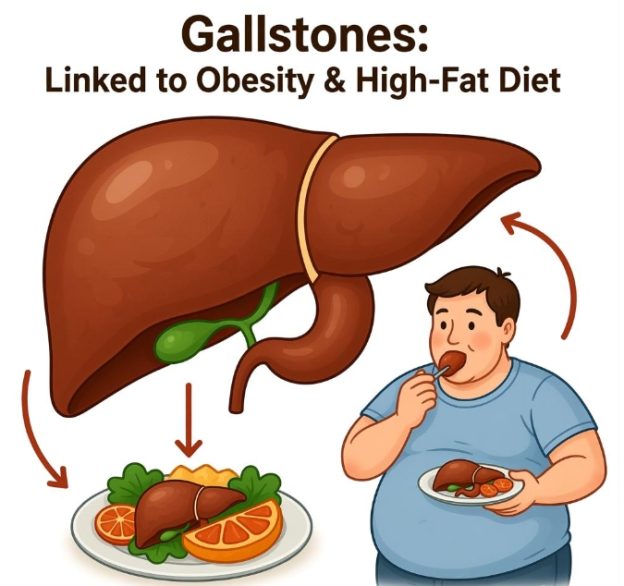Gallstones often remain silent for years. Symptoms appear only when a stone obstructs the cystic or common bile duct, triggering the well-defined attacks described below.
- Biliary colic
Sudden, crampy pain arises in the right hypochondrium or epigastrium, builds steadily for 15–30 min, and may last several hours. It radiates to the right scapula, shoulder, or between the shoulder blades and is typically provoked by a fatty meal or occurs at night . - Nausea and vomiting
Gastric stasis and bile-duct spasm produce pronounced nausea; vomiting may partially relieve the pain . - Intolerance to fatty foods
Patients report early satiety, bloating, eructation, or loose stools after meals rich in fat. - Low-grade fever & chills
Afebrile colic is usual, but temperature 37.5–38 °C with chills suggests acute cholecystitis or cholangitis . - Jaundice & pigment changes
Obstruction of the common bile duct elevates conjugated bilirubin, producing scleral icterus, dark urine, and clay-coloured stools . - Cardiovascular accompaniments
Tachycardia and reflex vasovagal sweating are common during intense pain . - Alarm features
Pain persisting >6 h, unrelenting vomiting, high fever, hypotension, or confusion indicates complications such as empyema, gangrene, pancreatitis, or ascending cholangitis and mandates urgent care .
| Symptom | Typical Features |
|---|---|
| Biliary colic | RUQ/epigastric pain, peaks 15–30 min, radiates to back/shoulder |
| Nausea/vomiting | Frequent, may relieve pain |
| Fat intolerance | Bloating, eructation, loose stools |
| Fever & chills | Low-grade in cholecystitis; high with cholangitis |
| Jaundice | Yellow sclera, dark urine, pale stools |
| Tachycardia/sweating | Reflex response to severe pain |
| Alarm signs | Pain >6 h, high fever, hypotension → complications |
